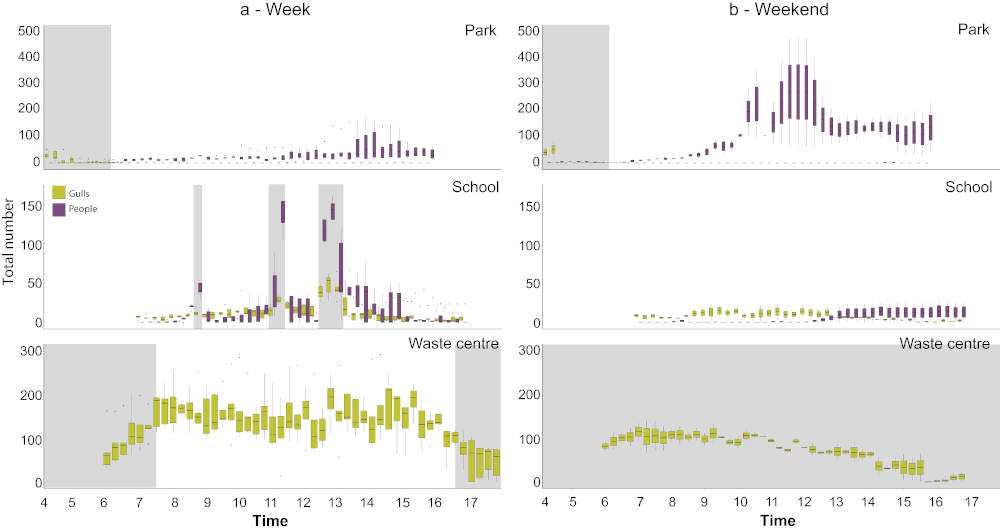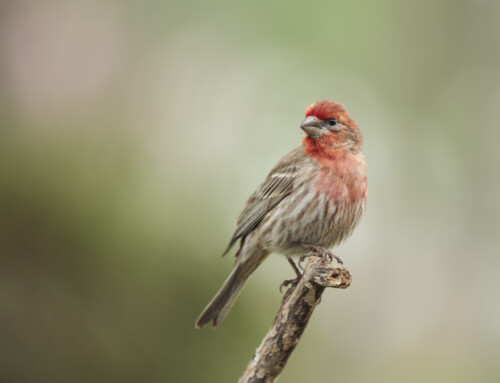LINKED PAPER
Urban gulls adapt foraging schedule to human‐activity patterns. Spelt, A., Soutar, O., Williamson, C., Memmott, J., Shamoun‐Baranes, J., Rock, P. & Windsor, S. 2020. IBIS. DOI: 10.1111/ibi.12892. VIEW
It is summer in the UK; it is just before dawn and your partner is snoozing next to you on the nest. You are rudely awoken by your three little chicks that are already producing that noise you hate when they are hungry. It is 4 am, so time to go and catch some earthworms and insects. You get up, stretch your wings, and fly to one of the big parks in the city. You are not the first one but there is still plenty of food. Trampling around, you fill your belly quite quickly with lots of food and head back to feed your hungry chicks and have another snooze while your partner is deciding where they should go. 11 am, almost lunch time, you have cleaned your feathers, reinforced the nest, cuddled with your chicks, but they are still hungry, so you must get going and find some more food. It’s lunchtime and you know exactly where to go! You arrive 5 minutes before break time and settle on a lamppost and wait for the secondary school students to fill the picnic benches outside the school. The moment the bell signals the end of break, you get up, fly around, and pick up whatever food falls on the ground or is left over. The competition is fierce as there is not much food, but whatever you find is delicious, and you head back to your chicks. After having fed your hungry chicks, they still want more and your partner is not really making a move to get going. So, you stretch your wings once again and fly to a spot you know always has food during the week. Your pals are already waiting for you on the roofs of a waste centre just when a big truck full of food waste is coming in. You’re in luck but you have to wait, as it is too dangerous to get in there while the truck is still there. As soon as it’s driving off, you and 100 others fly down and start searching for scraps and leftovers. There is plenty but much of it is covered with other waste, such as plastic, which is hard to separate from the food. With a full belly you fly back to the nest, feed the chicks. Time to rest, you have done enough for today.
Many gull species are in decline globally, but urban gull populations have been increasing over the last decades, especially in the United Kingdom. It seems that they like our roofs, high away from predators and with plenty of space for their nests. Also, food is abundantly available within and around the city on the streets, landfills, parks, markets, etc. (Figure 1). However, this food is not always available for gulls and other animals to use. For example, fish at fish markets is mainly accessible at the end of the day when the market has finished. To obtain the most energy, gulls need to figure out these timings and adapt their foraging behaviour to these time schedules.

Unfortunately, we know very little about how and if gulls (or other animals) follow human time schedules. We do know that some species of gulls follow fishing vessels during weekdays (Tyson et al 2015) and visit urban feeding grounds at specific times of the day (Yoda et al 2012). Therefore, we were interested in understanding if these visits were related to human activity and food availability. To be able to answer this question, we combined two different methods: GPS tracking and field observations.
We placed small GPS backpacks on the back (between the wings) of 12 individual Lesser Black-backed Gulls, Larus fuscus, nesting on roofs in the centre of Bristol, UK. We are following these gulls since 2016 but only used the data from the summer of 2018 for this study. With this GPS data we could select specific feeding grounds that the gulls were using for our field observations. We selected three main feeding grounds: a park, a school, and a waste centre. For a month, we went to these sites and observed the gulls and people present for up to 12 hours to count their numbers, food availability and human activity. Combining this field observational data with the GPS data gave us a better insight into the foraging schedule of the urban gulls.
Although everybody has experienced or seen gulls stealing food from people in parks, our gulls mainly went to parks early in the morning (Figure 2). Earthworms and insects are present in higher numbers during these early hours which could explain why gulls go to the park first thing in the morning. Other parks in the area showed a similar pattern but gulls also visited them at later times during the day. This could be a result of the observed park being a large park so there are little human-gull interactions.

Our first day at the school, the students were excited to tell us about the gulls visiting their school during lunch time. Indeed, our data showed that gulls were not only present in high numbers during lunch time to feed on leftovers (Figure 2), but also just before the start of the school and during the first break when students had their snack (Figure 3). Gulls were waiting and resting on the buildings and lampposts before break times to be able to forage at the right time especially when food was available. Schools should not be surprised by these results, as our GPS data from multiple school grounds showed a similar pattern of peaks during these break times.

Lastly, the waste centre was the location (out of the three visited) with the highest number of gulls foraging (Figure 3). They were present in higher numbers on weekdays and during the day (when the waste centre was open, and trucks were unloading food waste). While trucks were unloading their waste, gulls were waiting on the roof tops surrounding the food waste pile. As soon as there was no activity on the food waste pile, they all flew down to feast on the newly deposited food waste resulting in higher numbers of gulls on the pile than on the roofs (Figure 1). Although different waste centres across Bristol and surroundings had different opening hours, they still showed the same patterns in numbers of gulls during the day and between weekdays and weekends.
With this study in Bristol, UK, we have shown that gulls in cities are able to adapt their foraging schedule to human time schedules by making use of different food resources depending on the timings of their availability. Some of the gulls even used all three feeding grounds in the same day, suggesting that they might track the availability to optimise their energy intake. These results highlight the behavioural flexibility of gulls and their ability to adapt to the artificial environments and time schedules of urban living.
References
Tyson, C., Shamoun-Baranes, J., Van Loon, E.E., Camphuysen, K. & Hintzen, N.T. 2015. Individual specialization on fishery discards by lesser black-backed gulls (Larus fuscus). ICES Journal of Marine Science 72(6): 1882-1891. VIEW
Yoda, K., Tomita, N., Mizutani, Y., Narita, A. & Niizuma, Y. 2012. Spatio-temporal responses of black-tailed gulls to natural and anthropogenic food resources. Marine Ecology Progress Series 466: 249-259. VIEW
Urban Gull Project website. Available at: https://www.uva-bits.nl/project/flight-energetics-of-urban-lesser-black-backed-gulls-a-case-study-for-bio-inspired-flightuav-technology/ VIEW
Image credit
Top right: Lesser Black-backed Gull (Larus fuscus) © Anouk Spelt/Oliver Soutar




